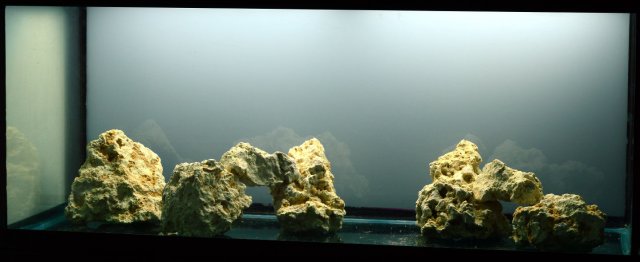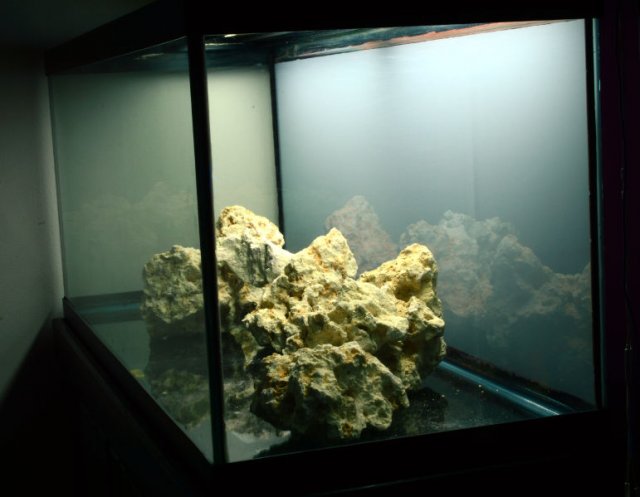I am planning on setting up a 75 gallon SW tank which has been previously (about 9 years) a FW. There is so much different and conflicting information out there that I still get confused about it all when I think about it. We decided to start out with dry aragonite sand (80 lbs) and some dry rock (50lbs). The sand and rocks arrived today. Once everything else is here and the sump is built and everything is connected it will time to cycle this new tank. Thinking of filling it with saltwater, start it running, and then go get a cup or two of fresh live sand and a few pieces of fully cured live rock from my store in town to put in tank. Then start the cycle with a frozen shrimp, no light in DT, refugium with lights on their schedule (on from 6pm to 6am, off during the day). Then wait for the tank to cycle which I hope will be done within 8 weeks from the start, but if it will take longer it will just take longer. Once I see a spike in ammonia, nitrite, and nitrate and everything went back to zero, it will be time to slowly add some fish and later down the road some coral. One thing I really don't understand yet is the source of ammonia: After I take out the shrimp once the ammonia levels down, do I need to keep "feeding" the tank every few days with some fish food to keep the ammonia going, or will the bacteria that break down the ammonia be okay for the weeks after until the nitrate goes down? ? Or do I just leave the shrimp in there until it is completely gone and not worry about another source of ammonia?
Anyway, here is my progress so far (the lights are still the old hood, will need to get brighter ones that will support coral, probably an led strip) - layed the rocks out for a quick look. This way I can still rearange things if for some reason we want it too look different. Not planning on changing anything once the water is added.


Thoughts? Comments? Suggestions?


Anyway, here is my progress so far (the lights are still the old hood, will need to get brighter ones that will support coral, probably an led strip) - layed the rocks out for a quick look. This way I can still rearange things if for some reason we want it too look different. Not planning on changing anything once the water is added.


Thoughts? Comments? Suggestions?







